The permanent tour
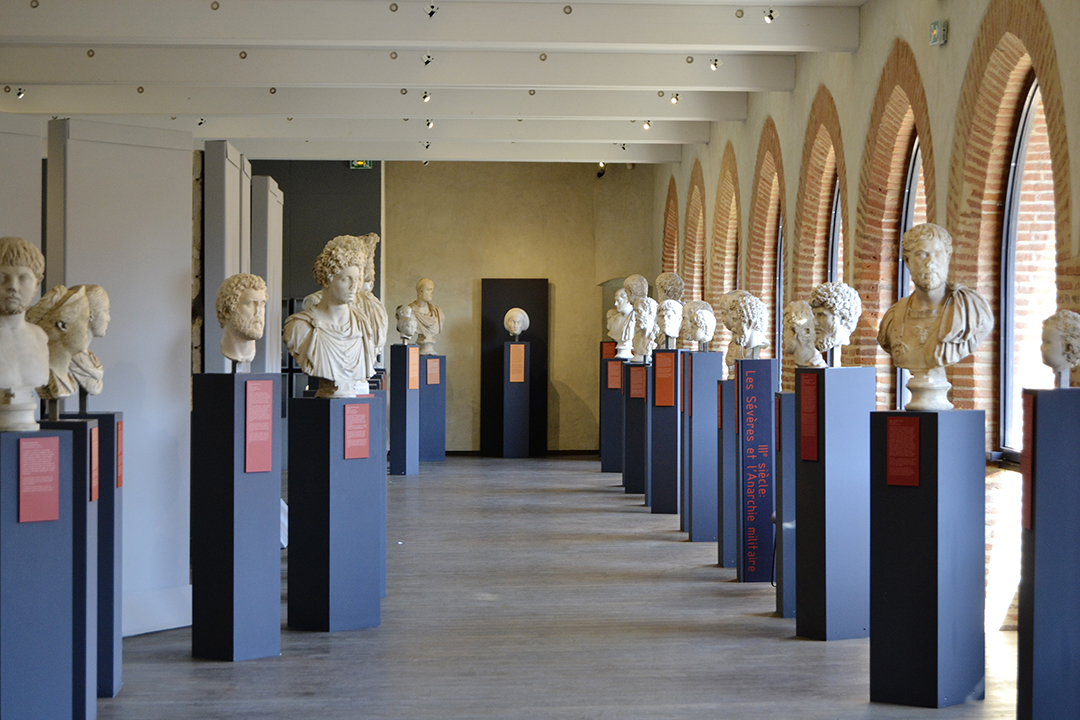
The Musée Saint-Raymond is Toulouse’s archaeology museum. Inside this history-filled building, you’ll discover objects, the vast majority of which come from Toulouse and the surrounding region, as well as an archaeological site.
These collections provide an insight into local history from the Bronze Age to the Middle Ages. The vast majority of the objects on display provide a better understanding of Tolosa during Antiquity, inhabited by the Gauls, Romans and Visigoths.
Some of these objects have been in the museum since it opened, while others only emerged from the ground a few years ago. The collections are regularly enriched by new archaeological discoveries!
Among the 28,000 objects conserved by the Musée Saint-Raymond, only 3% are on display! For more information on the collections that are not on display at the museum, visit the pages dedicated to the collections in the reserves.
The museum’s exhibits are spread over three levels, as shown below. You can now discover the museum’s must-sees.
BONUS
- Game kits for all ages available on every floor
- Hidden objects to discover, reproductions to touch, videos to watch, and digital displays throughout the museum
The second floor presents Toulouse and its region during Antiquity, inhabited by the Gauls, Romans and Visigoths.
Gallic Toulouse
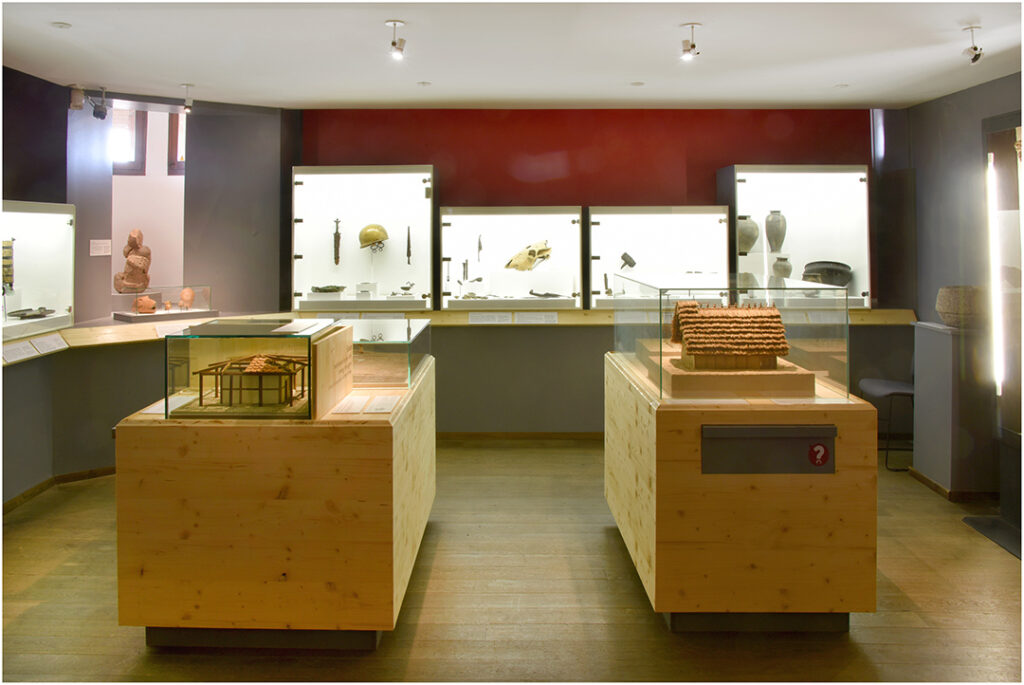
Long before the arrival of the Romans, the area around Toulouse was occupied by the Volcae Tectosages. It was they who produced the two sets of gold jewellery on display in the museum.
From the 2nd century BC onwards, these Gauls settled mainly in two areas, the Saint-Roch district and the hilltop site of Vieille-Toulouse, which was surrounded by a 200-hectare fortification. These two habitats are better known today thanks to excavations carried out since the early 2000s. Following these excavations, new objects and information were incorporated into the museum tour.
BONUS
- A 3D video presenting the occupation of the Tolosa area since 1000 BC
- Models to help you understand the archaeologists’ interpretation work
- Drawers to open to uncover hidden archaeological objects
Tolosa in Narbonnaise
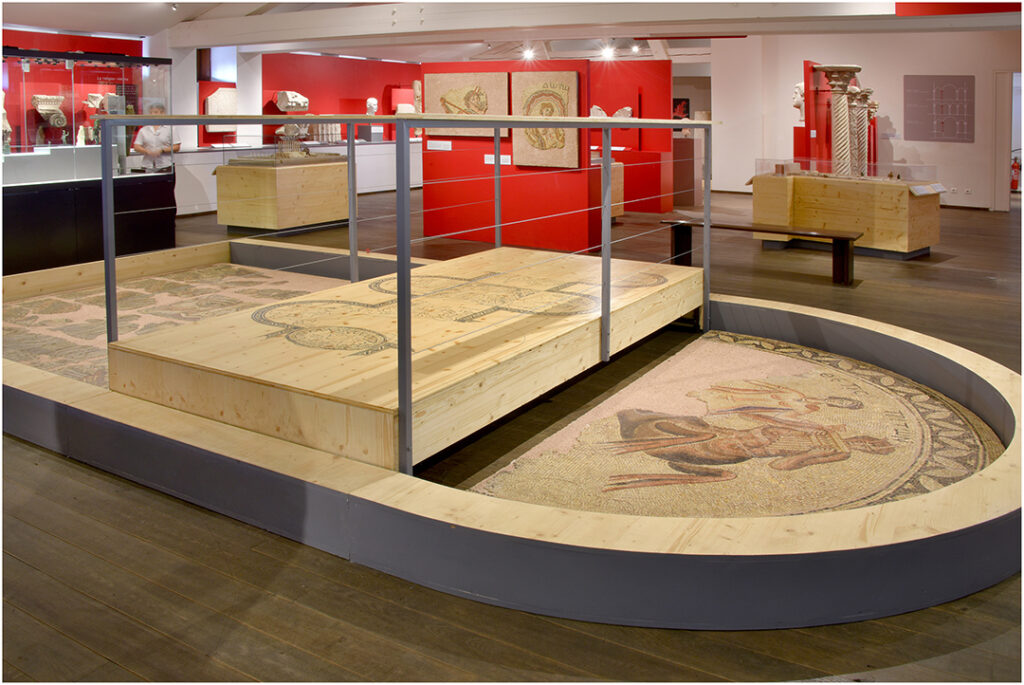
At the end of the 1st century BC, Roman Tolosa was built on the plain, along the right bank of the Garonne, and the Gallic town was abandoned. The remains, videos and models on display in the museum give an idea of what the Roman city looked like.
In Roman times, Tolosa was located in the Narbonnaise province. The museum displays objects from everyday life that belonged to the Romans who lived in the region.
As well as these everyday objects, statues are also on display, including an exceptional set from Béziers representing members of the very first family of emperors in the Roman Empire, the Julio-Claudian dynasty.
BONUS
- Touchable reproductions of objects (pottery, enlarged ivory spoon handle)
- A Roman domus (house) model to explore
- Pigments used in Roman paintings
- Mosaic techniques to discover
Toulouse, capital of the Visigoths
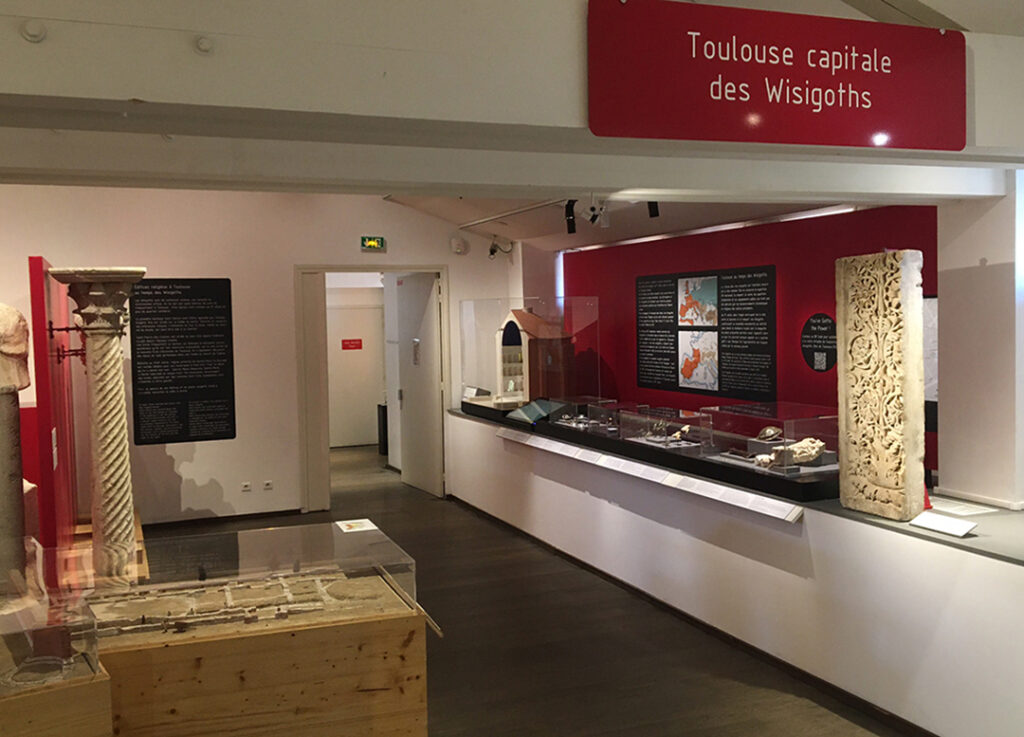
From the early 5th century onwards, the Visigoths settled in Toulouse, which became the capital of their kingdom until 507. The Visigoths’ occupation of the region is documented by objects discovered during archaeological excavations, some of which are very recent.
BONUS
- A 3D exploration of the tombs located on the site of Seysses
- A 3D video depicting the buildings in Toulouse’s Goth quarter
- Scale models of what remains of the Visigoth palace and the Daurade church
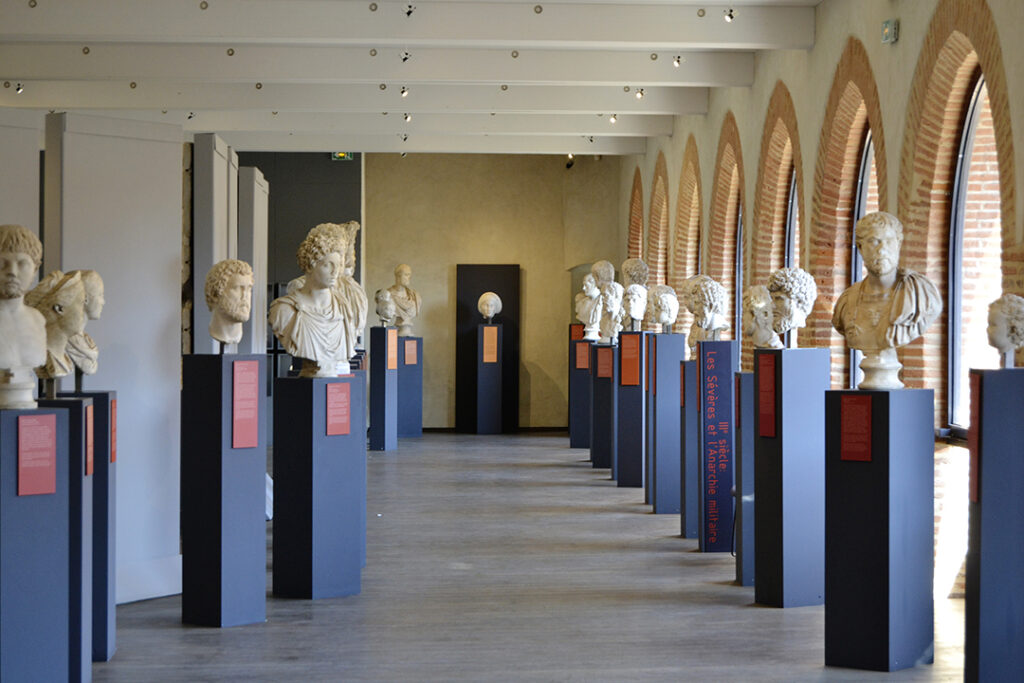
The works on display on the 1st floor come from the largest known Villa in Gaul, that of Chiragan. An exceptional set of statues was discovered in 1826 in Martres-Tolosane, approximately sixty kilometres away from Toulouse. Only Hadrian’s Villa in Tivoli and the Papyrus Villa in Herculaneum have revealed a greater number of marble sculptures!
But what is a Roman Villa? It’s an estate located outside a town, comprising residential buildings as well as farm buildings. The residential part of Villa Chiragan alone covered an area equivalent to 22 rugby pitches. The statues on display on the 1st floor of the museum come from there.
The Villa’s successive owners, between the 1st and 4th centuries, are unknown, but they belonged to the Roman elite and probably had links with imperial power, as they may have been provincial governors.
The Villa was destroyed at the end of Antiquity, and part of its decor was thrown into pits. The statues were damaged, and some parts were lost, as this video explains. Time, and the cleaning carried out after their discovery, have also erased the colours they displayed during Antiquity, but researchers are now finding traces of them!
For further information, the digital sculpture catalogue from the Roman Villa of Chiragan is available free of charge, in English.
BONUS
3D coins which can be turned upside down, thus revealing their secrets!
The portrait gallery
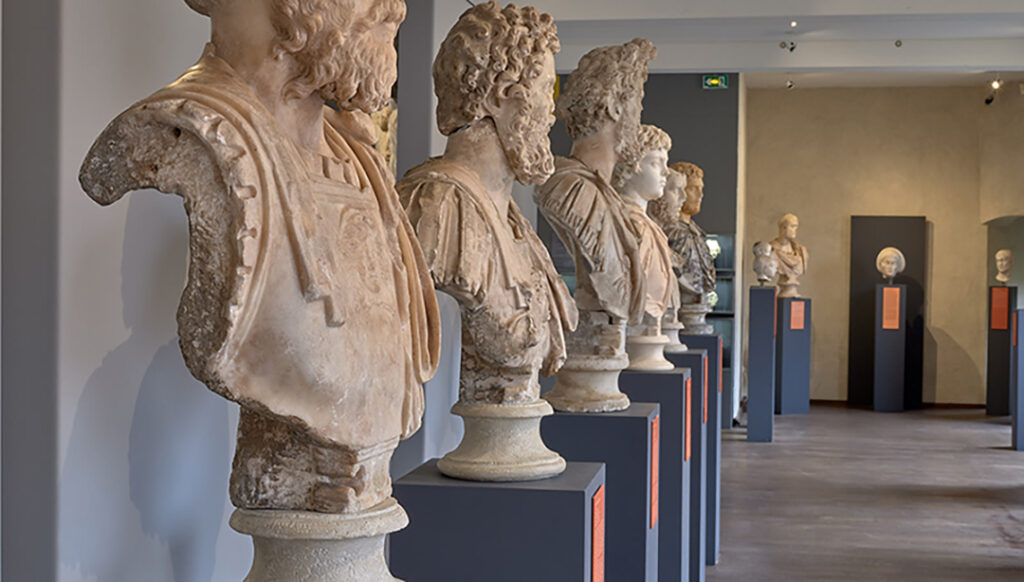
Most of the portraits on display in the gallery were sculpted between the 1st and 3rd centuries, in marble from Asia Minor (now Turkey). They depict members of the emperor’s family, as well as unidentified members of the Roman elite.
This collection shows how portraiture also followed fashion, as the beardless faces of the 1st century gradually gave way to portraits with beards and curly hair!
Mythological statues
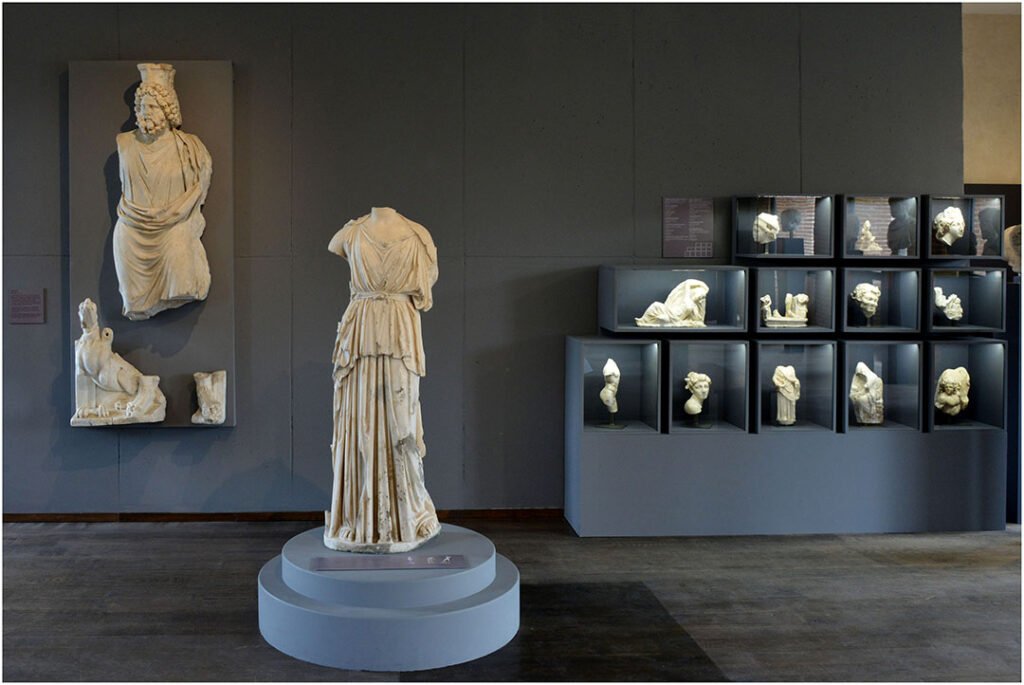
The Villa was also decorated with numerous mythological statues. These statues were inspired by Greek art. In fact, Greek statues were highly prized by the Romans, who made numerous copies. Furthermore, it is mainly thanks to these copies that Greek works are well-known, as they were made in bronze and were often melted down and lost!
Roman copies were faithful reproductions, or included adaptations, such as changes in size or detail, or sometimes combined several models to create new ones.
Some of Chiragan’s statues were inspired by famous Greek works, such as Myron’s Athena or Praxiteles’ Venus.
The Labours of Hercules and the Tetrarchy
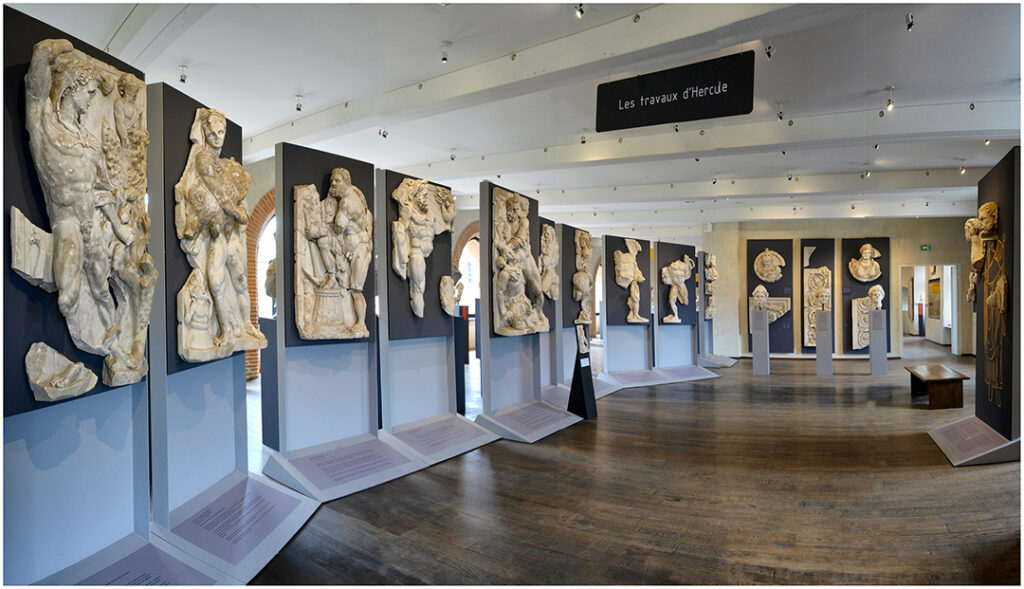
It was apparently at the end of the 3rd century that Villa Chiragan received a new sculpted decor. These works were made from local marble quarried at Saint-Béat in the Pyrenees. They represent divinities, as well as members of emperor Maximian Hercules’ family. Maximian did not identify with Hercules by chance. Like the hero, he had fought many enemies and wanted his strength to be recognised. In fact, the exceptional reliefs depicting the Labours of Hercules were certainly made in the same workshop as the portraits of Maximian’s family. The faces of the hero and the emperor were very similar! Unlike mythological statues inspired by famous Greek works, these reliefs are one of a kind, and have no known equivalent.
An archaeological site
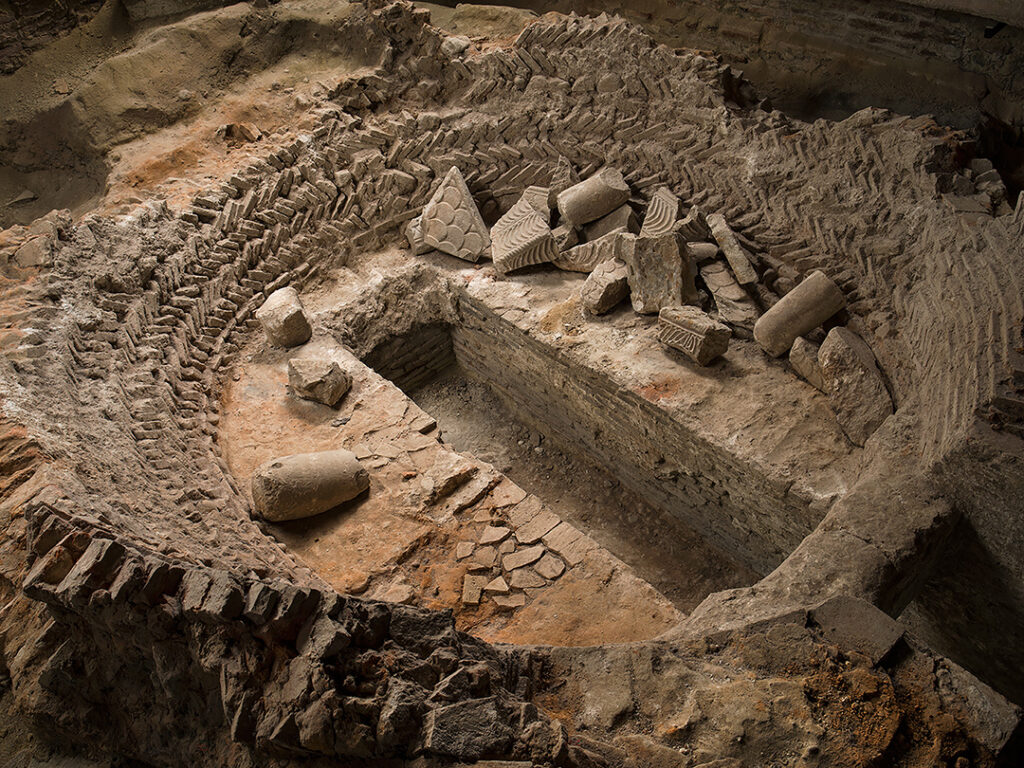
As things aren’t done by halves, the Musée Saint-Raymond is not only an archaeology museum, but also an archaeological site! Around a hundred burials were discovered when the museum was extended in the 1990s. Some sarcophagi were left in place, and can be seen when entering the basement. Another exceptional vestige has been preserved: a kiln used to produce lime, a material used to make mortar and construct buildings. For more information, visit the page devoted to the lime kiln.
LES PETITS + AU MUSÉE
- Lime starts now: the different stages of lime production can be discovered by activating lights that change the kiln’s lighting.
